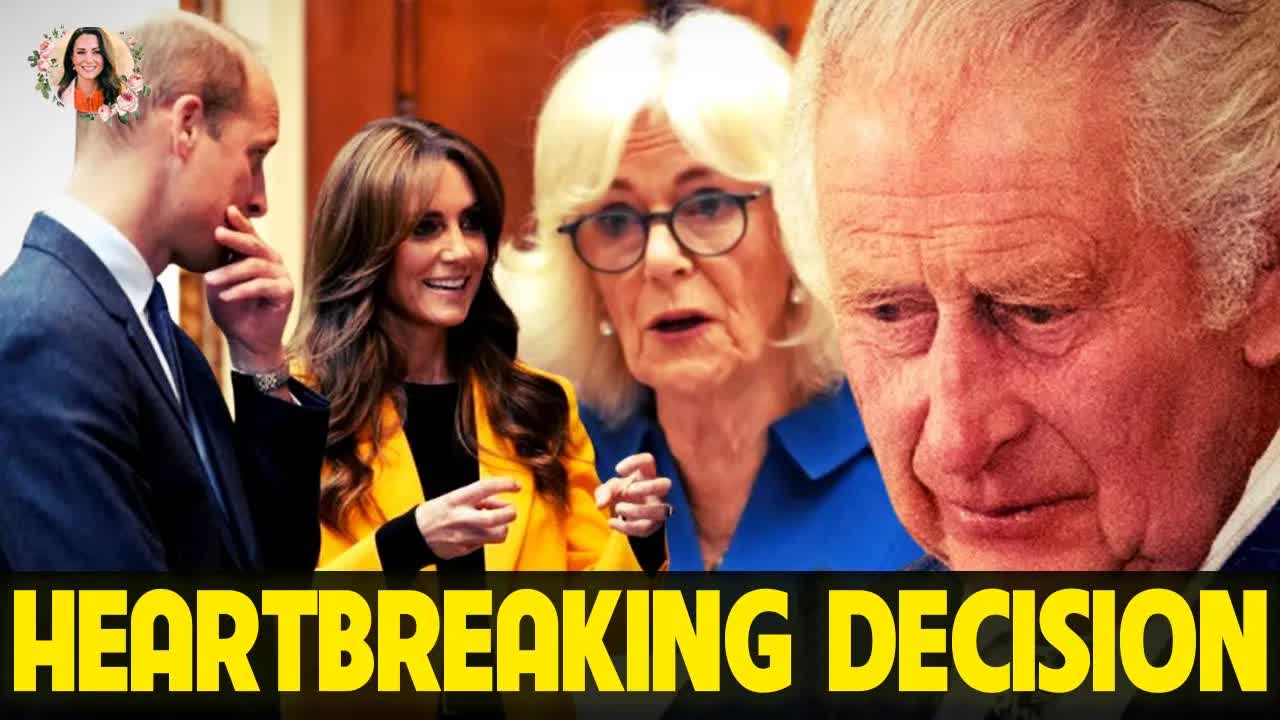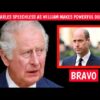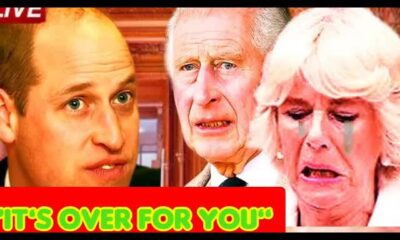Must Read
Prince William’s Strategic Moves Amidst Royal Changes and Controversies
In a surprising turn of events, Prince William is making headlines as he navigates the complexities surrounding Queen Camilla and his brother Harry's role within the royal family.
Recently, King Charles III allowed Camilla, the Queen Consort, to address the nation on Armed Forces Day—a decision that has sparked considerable debate across the UK.
This marks a notable shift, as it was the first time in ages that the public heard from her instead of the King himself.
The question on everyone's lips is whether this choice was a deliberate act by Charles or if it stemmed from external pressures.
As the head of the British Armed Forces, one might wonder why Camilla was given such a prominent platform.
The timing raises eyebrows, especially with speculation swirling about a potential agenda to elevate her status within the monarchy.
Online discussions reveal a mix of sentiment among the public.
Some express frustration at what they perceive as an effort by Charles to boost Camilla's profile, pointing out her previous pride in her father, Major Bruce Shand.
Critics argue that her gratitude towards the Armed Forces comes off as disingenuous, suggesting that a brief message would have sufficed rather than a full-blown address.
Adding another layer to the royal narrative, Princess Catherine is set to return to her royal duties in early August after overcoming cancer with six months of chemotherapy.
Her recovery has been closely watched, and many are eager to see her back in action.
This transition points to a future where the royal family may need to adapt to a new model—one that aligns with other European monarchies while addressing public concerns about taxpayer funding.
Prince William appears determined to maintain a streamlined royal family.
His approach seems to echo the sentiments of many who argue for a more accountable and compact group of working royals.
By keeping the core members small, he aims to mitigate criticism regarding royal expenses, which have been a hot topic in recent years.
William's strategy includes enlisting his cousins occasionally to keep things fresh without expanding the working royal roster significantly.
As the older generation gradually steps back, it raises questions about the roles of his children, George and Louis.
Reports suggest that while George may follow the traditional path of a working royal, William and Catherine are keen on encouraging their younger children to explore careers outside the royal framework.
The landscape of the royal family has changed dramatically over the past few years.
With the departures of the Sussexes, coupled with the losses of Prince Philip and Queen Elizabeth II, the monarchy has seen a reduction in its working members.
The removal of Prince Andrew's titles further complicates the picture.
Today, the royal family consists of just 11 working royals, including King Charles, his siblings, and the Duke and Duchess of Cambridge.
At 42, Prince William stands as the youngest member of the working royals, alongside Catherine, who is currently on leave for her health.
Kensington Palace has yet to announce her official return date, but anticipation is high.
Once she resumes her duties, the narrative surrounding the fragile state of the monarchy may shift, moving away from health battles toward a more stable royal image.
It's worth noting that the palace's handling of simultaneous health crises involving both King Charles and Princess Catherine has drawn scrutiny.
The Windsors, known for their longevity, have faced an unprecedented challenge.
With Queen Elizabeth II living to 96 and Prince Philip reaching 99, the notion of a robust royal lineage seemed almost guaranteed.
However, with the current slimmed-down monarchy, King Charles faces a pressing need to reassess the royal family's structure.
As the home team navigates these changes, the future of the monarchy hangs in the balance, and how William and Catherine choose to shape it will undoubtedly leave a lasting impact.
NEXTNEXT
Prince William's Vision for a Streamlined Royal Family Amidst Controversy
In a move that has captured the attention of royal watchers, Prince William is making significant strides regarding Queen Camilla and the dynamics within the royal family.
Recent events have stirred public sentiment, particularly following King Charles's decision to let his wife deliver a national address on Armed Forces Day, an occasion that has not seen such a shift in a long time.
This unusual choice has ignited debates among the British public, raising eyebrows and questions about the monarchy's direction.
For the first time, the nation tuned in to hear from the Queen Consort rather than the King himself.
This begs the question: was this a strategic delegation by Charles, or was it influenced by external factors?
As the head of the British Armed Forces, one might wonder why Camilla was the one chosen to take center stage during this pivotal moment.
The implications of this decision have led to speculation about a possible push to elevate Camilla's status within the royal hierarchy.
Some critics have voiced their frustrations online, perceiving this as an attempt by Charles to enhance Camilla's public image.
They argue that her connection to the Armed Forces is tenuous at best, primarily stemming from her father's military background.
Many believe that a straightforward message from her would have sufficed, rather than a full-blown address that some see as insincere.
In a contrasting narrative, Princess Catherine is set to return to her royal duties this August, following a challenging battle with cancer that involved extensive chemotherapy.
Her recovery brings a sense of hope; however, it also highlights the evolving landscape of the royal family.
The notion of a slimmed-down monarchy appears to be gaining traction, aligning with trends seen in other European royal families while addressing public concerns over taxpayer expenses.
William and King Charles seem determined to maintain a tightly-knit group of working royals, believing that fewer members can lead to greater accountability.
Critics argue that expanding the roster of working royals could only fuel public discontent regarding funding.
William's strategy of selectively involving cousins in royal duties might just be the innovative approach needed to keep the monarchy relevant and engaging.
The current royal roster has undergone significant changes in recent years.
The departure of the Sussexes in 2020, coupled with the deaths of Prince Philip and Queen Elizabeth II, has drastically reshaped the landscape.
Additionally, Prince Andrew's loss of titles has contributed to the shrinking number of working royals, leaving the family with just 11 active members today.
Among these, King Charles leads, accompanied by his siblings, Princess Anne, Prince Edward, and Queen Camilla.
At 42, Prince William stands as the youngest working royal, alongside the Princess of Wales, who is currently on a break due to her health challenges.
As for when Catherine will officially resume her duties, Kensington Palace has yet to announce a specific date.
While the palace navigates these turbulent waters, it's understandable that they may not have had a contingency plan for the simultaneous health crises affecting both King Charles and Princess Catherine.
The royal family has enjoyed a remarkable legacy of longevity, with figures like Queen Elizabeth II and Prince Philip living well into their nineties, seemingly without concern for future planning.
However, with the new era of King Charles's streamlined monarchy, the royal family faces a pressing need to adapt.
The once seemingly immortal senior royals have exited the stage, leaving a gap that the remaining members must fill.
As the monarchy evolves, the question remains: how will William and Catherine shape its future, especially with their children in mind?
As they prepare for their roles, it is clear that William envisions a future where his children might seek paths outside the royal bubble, with George likely to take on a more traditional royal role.
The dynamics are shifting, and with each change, the royal family must find its footing in a world that is constantly evolving.
In this age of uncertainty, the Windsors are tasked with redefining their relevance while holding onto their rich heritage.
As the public watches closely, the decisions made today will undoubtedly echo through the corridors of history, shaping the monarchy for generations to come.






































